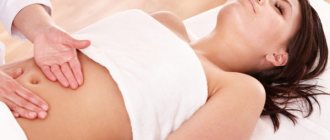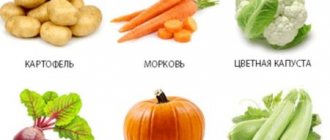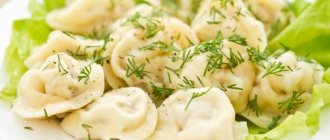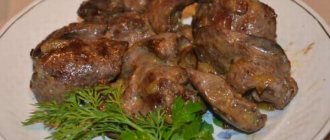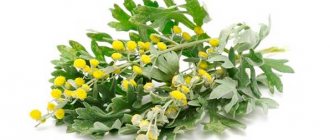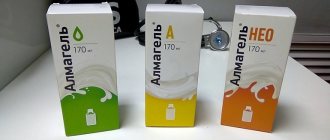A malfunction of the pancreas can result in a serious attack. You need to know about the location of the most important digestive organ in the human body. This will help determine the localization of the pain syndrome and quickly navigate the problem based on the main signs.
Where is it located in a person, where is it located?
Considering the anatomical structure of the abdominal cavity of a person standing upright, we can describe how the organs are located in it:
- immediately below the diaphragm are the liver and stomach (the main part of the liver is on the right, the stomach is on the left);
- on the left side, near the stomach, there is another organ, small in size, the spleen;
- the gallbladder is placed in front of the liver, next to the stomach;
- behind the stomach, pressed against the back wall of the abdominal cavity, the pancreas is located;
- below - the large and small intestine begin.
Thus, the organ we are interested in lies not under the stomach, as is mistakenly thought based on the name, but behind it. If a person is in a horizontal position, then the pancreas actually appears exactly under the stomach.
Rules for palpation in children
Examination of the pancreas by palpation of the organ can be carried out in both adults and children. In the latter, palpation is carried out when there is a noticeable enlargement and thickening of the pancreas. At the same time, the basic rule of conducting the examination remains unchanged - diagnosis is carried out only on an empty stomach.
During the procedure, the doctor first palpates the stomach and transverse colon. This is done in order to correctly navigate and not mistake any other organ for the pancreas.
Having determined the exact location of the pancreas, the doctor places his fingers horizontally to the child’s body and parallel to the longitudinal axis of the organ to be examined. In this case, the fingers are located approximately 2 cm above the curvature in the stomach area.
What functions does the organ perform?
The functions of the pancreas are conventionally divided into two main ones:
- Endocrine (or internal).
- Exocrine (or external).
The first is responsible for the production of hormones and regulation of metabolism. The second is for the secretion of pancreatic juice.
Exocrine secretion is important in order to properly digest food that passes from the stomach to the duodenum. The pancreas secretes pancreatic juice, which includes a sufficient amount of the following enzymes:
- lipases, which break down fats;
- lactases and amylases that digest carbohydrates;
- trypsins and chymotrypsins, so necessary for the digestion of proteins.
Enzymes are not all the valuable substances that pancreatic juice contains. It also contains elements that can protect the intestinal mucosa from excessive acidity. These important substances neutralize acid from gastric juice and thereby regulate the alkaline balance of the gastrointestinal tract.
Internal secretion involves the balanced production of hormones such as glucagon and insulin. The first one increases the glucose level in the blood, the second one decreases it. The result is an adequate carbohydrate metabolic process. If something goes wrong in it, diabetes develops.
Where does it hurt, on which side?
Very often it is difficult for a person to describe the pain syndrome that engulfs him during a pancreatic attack. The sensations may have the following variations:
- sharp pain in the right hypochondrium, radiating to the lower back;
- aching pain under the diaphragm with tingling in the left arm;
- severe pain around the navel, which is slightly relieved by bending forward.
An inflamed pancreas, as a rule, begins to hurt from its main part - from the head. Therefore, pain is more likely to occur in the area located just above the navel, to the right of the midline. If a sharp pain resonates in the back, in its lumbar region, we are talking about the spread of inflammation to the tail of the organ and to more serious pathologies.
Palpation by points
To carry out Grotto palpation, certain projection points of the pancreas are used, located on the anterior abdominal wall. The body’s reaction when exposed to each of them makes it possible to determine in which area of the pancreas inflammation develops, and even the nature of the pathology.
We also recommend viewing: Causes and treatment of pancreatic atrophy
During the study, doctors influence the following:
- Desjardins. It is located 4-6 cm from the umbilical cavity, along a conventional line that connects the navel to the right armpit (to the right and slightly up from the navel). The patient’s painful reaction when exposed to this point indicates damage to the head of the organ and the development of acute pancreatitis.
- Mayo-Robson. It is localized on the line connecting the navel with the middle of the rib arch. To find a point, the conditional line is divided into three parts. The projection will be located between the middle and outer segment (upper left square of the abdomen). Exposure to this area makes it possible to determine lesions in the tail.
- Kacha. Located on the outside of the terminal part of the rectus abdominis muscle (several cm above the umbilical cavity). Pain during palpation indicates pathology in the body and tail of the pancreas.
- Male Guy - located just below the rib, on the left in the line of the rectus abdominis muscle. With its help, pancreatitis can be detected in the chronic stage.
- Hubergritsa - located on the left symmetrically to the Desjardins point and indicates problems with the body of the gland.
In addition to specific points, palpating the pancreas, the doctor can act on the following areas:
- Shoffara - on the right side between the navel and the armpit.
- Janovera - located on a horizontal line passing through the navel and 3-5 cm to the left.
- Gubergritsa-Skulsky - similar to the Shoffar zone, only on the opposite side.
In addition, the study may reveal Voskresensky's symptom, when the pulsation of the abdominal aorta is not detected in the projection of the organ being examined.
Why does it hurt?
Pain syndrome can be caused by pathological processes occurring in the pancreas:
- when internal pressure in an organ increases;
- if the bile duct is compressed;
- perhaps the effect on sensory nerves of fibrotic changes in tissues;
- due to ischemia of blood vessels that enrich the organ with blood;
- the appearance of a cyst or cancer.
The inflamed, swollen pancreas increases in size and puts pressure on neighboring organs. Because of this, the pain can intensify and spread throughout the abdominal area.
There are quite a few reasons why pancreatic pain can occur. The most basic primary factors due to which the pancreas fails to cope with its functions and fails include:
- systematic overeating and passion for fatty foods;
- poisoning of the body with nicotine, alcohol, chemicals, medications;
- cholelithiasis.
Pancreatitis often occurs against the background of long-term mental or physical stress. Almost all causes of pancreatic pain are long-term systematic neglect of health, failure to treat chronic diseases, and weakened immunity.
Diagnosis and principles of palpation for pancreatitis
Based on general clinical manifestations, it cannot be argued that a sharp deterioration in the patient’s well-being is associated precisely with an acute attack of pancreatitis. In addition to the form of the pathological process, there are various types of inflammation of the pancreas, which are associated with negative consequences of a different nature.
To make a correct diagnosis, the patient must be carefully examined. The patient undergoes blood and urine tests, a coprogram, ultrasound, radiography, CT, and MRI are performed.
Physical examination if the development of an acute inflammatory process is suspected involves palpation according to the established method. This method is based on sensations of pain in certain places and percussion of the area under study. Each picture has its own symptoms.
Zones with pancreatitis are named after the authors, named after the medical specialists who studied these signs. For example, Shoffar's symptom for pancreatitis, Kacha and other doctors.
Palpation as a diagnostic tool began to be used at the end of the 20th century, when there was no specialized equipment to help identify the causes of acute pain and malaise in a patient. The doctors used their fingers during the examination. In modern medical practice, the palpation method complements technologies - ultrasound, MRI.
Its advantage is that with the help of palpation, acute pancreatitis can be quickly suspected, and accordingly, adequate treatment can be started as soon as possible. In an adult who does not have any dysfunction of the pancreas, the organ cannot be palpated.
Against the background of palpation and percussion in the pancreas area, it is necessary to carefully monitor changes in the nature of the patient’s pain syndrome.
How to understand that it is she who is hurting?
Sometimes it is easy to confuse pancreatic pain with another pathology. For example, with radiculitis, discomfort occurs closer to the left side and can resonate in the hypochondrium. Therefore, you need to pay attention not only to how the pancreas hurts, but also to the accompanying symptoms:
- If continuous vomiting is added to the sharp pain, food poisoning may be suspected. Acute pancreatitis is characterized by the fact that the pain becomes more and more intense, and vomiting does not bring even temporary relief.
- Frequent pressing discomfort in the upper abdomen and a feeling of overeating from small portions indicate chronic pancreatitis. Additionally, this may be indicated by weight loss, dryness and bitterness in the mouth.
Serious problems of the pancreas can also be judged by stool. The masses become shiny in appearance, stick to the walls of the toilet bowl and may contain visible pieces of undigested food.
Methodology
A finger examination of the pancreas is performed with the patient lying on his back. The procedure is carried out on an empty stomach, or after cleansing procedures.
To determine pancreatic diseases by palpation, two different diagnostic methods can be used. One of them is the Obraztsov-Strazhescu method.
This technique was introduced into medical practice back in the 19th century. The procedure for carrying it out is as follows:
- Determination of the study area.
- Determination of organs located next to the gland being studied.
- Palpation of the organ. To do this, the fingers are placed slightly above the lower part of the stomach. When the patient inhales, the diagnostician forms a special fold. And as you exhale, the doctor’s fingers deepen, after which they slide without interruption to the posterior abdominal wall. If at this moment the patient experiences pain, this indicates the development of an inflammatory process. The absence of discomfort when immersing the fingers, on the contrary, indicates satisfactory health.
Important. In case of inflammation, the pancreas will be palpable as a small cylinder 1-2 cm thick.
All finger movements during the examination are carried out along the organ along horizontal lines, which are located 3-4 cm above the greatest curvature of the stomach.
We also recommend viewing: What is pancreatic lipomatosis and how to deal with it?
The second method of examination by palpating the organ is Grotte palpation. This technique involves the use of targeted painful techniques. During diagnosis, the patient should lie on his right side with his legs bent and his right arm behind his back.
As the patient exhales, the doctor inserts his fingers, determines the intersection of the pancreas with the spine and acts on certain points. Based on the patient’s reaction to manipulation, the specialist is able to determine the presence of pathologies.
Using this study, not only the presence of inflammation is determined, but also its localization, which is why it is most common in diagnosing pancreatic diseases.
Main symptoms
Impaired secretion of pancreatic juice causes a typical symptomatic picture for both men and women:
- Pain syndrome. Unbearable cutting pain above the navel, extending into the left hypochondrium or aching, growing. Sitting forward or "fetal position" may provide some relief.
- Dyspeptic disorders. Nausea, vomiting with bile, diarrhea, bloating, belching - all these signs accompany a failure of fermentation of pancreatic juice.
- Intoxication. Enzymes blocked in the pancreas begin to destroy surrounding tissue, and food in the duodenum, not receiving the necessary elements for breakdown, decomposes. All this poisons the body and manifests itself in tachycardia, cold sweat, increased body temperature, headaches, severe weakness, and dizziness.
Chronic pancreatitis leads to even more serious pathological processes in the body. For example, due to an imbalance in insulin production, diabetes mellitus begins. And metabolic disorders affect the liver. As a result, yellowness of the skin and eye sclera appears.
Diagnosis of diseases
To select effective complex therapy, first of all, an accurate diagnosis is necessary. For its qualified differentiation, a set of diagnostic measures is carried out, including several stages:
- Visual examination by a doctor of the skin and eye sclera. Probing painful areas using palpation.
- Studying the patient’s medical history, genetic predispositions, and other chronic diseases.
- Laboratory study of blood, feces and urine parameters. The level of pancreatic enzymes is measured in the blood serum. Biochemical analysis reveals the degree of activation of bilirubin and liver fermentation, as well as glucose content. The amylase level in the urine is analyzed. The content of undigested fats is determined from feces.
- An abdominal ultrasound shows the contours of the pancreas and the degree of its enlargement, the presence of stony formations or scars in the bile ducts. For the same purposes, radiography or layer-by-layer computed tomography may be prescribed.
Only all the data taken together can give a clear picture of the pathology and help find the most effective treatment strategy.
Treatment
A conservative treatment method consists of medications and providing maximum rest to the pancreas (hunger followed by a strict diet). Some home remedies and traditional medicine recipes can be added to therapy, but only after prior agreement with the doctor.
Antacids
Drug treatment necessarily includes taking antacids - medications that can suppress gastric acid. Strength of action, duration of effect and composition are the main characteristics of drugs that are distinguished in this group.
Absorbable antacids are among the most effective and fastest-acting. Preference is given to simple connections that have been tested many times:
- magnesium oxide;
- sodium phosphate or sulfate;
- sodium bicarbonate.
In inpatient treatment, these substances are administered in pure form intravenously. In outpatient treatment, pharmaceutical preparations are popular, the composition of which is based on the listed antacids (we are talking about Bourget's mixture, Rennie or Tams mixtures).
Non-absorbable antacids act for a longer period, although their effect occurs more slowly. These elements (aluminum salt of phosphoric acid, magnesium hydroxide, alginate) are the basis of pharmaceuticals that produce such drugs as Almagel, Phosphalugel, Maalox.
Enzyme preparations
Due to enzymatic dysfunctions, food is poorly digested, and a person suffering from inflammation of the pancreas is prescribed enzyme preparations. Therefore, on what substance the medicines are based, they are divided into groups:
- their animal proteins;
- vegetable.
In the production of the former (for example, pancreatin, mezim, creon) pork protein is used. It improves digestion and fermentation of pancreatic juice. But it can cause allergies. Especially in children and pregnant women. The second group acts softer and weaker, but is based on non-allergenic papain or rice fungus (somylase, pepphys, unienzyme).
Gastroenterologists warn about the dependence of the body, accustomed to artificial fermentation. Over time, the pancreas refuses to produce the necessary elements on its own.
Therefore, if the pathology has not yet gone too far, doctors themselves recommend considering traditional medicine recipes (herbs, decoctions, infusions) - those that improve gastric motility and the production of enzymes naturally.
Surgery
Surgical treatment of the pancreas is used infrequently, only if traditional therapy fails to cope with the tasks and the pathology progresses rapidly. Indications for surgery include cysts, cancers, necrosis of pancreatic tissue, and large stones in the bile ducts.
The operation is performed under general anesthesia. During the intervention, the surgeon can cut off part of the organ (resection of a separate affected area) or remove only a dangerous formation (cyst, tumor). In exceptional cases, a pancreas transplant is possible. During the operation, the inflammatory process is stopped, pain is eliminated, and bile is drained and removed.
Pain and pancreas
Lecture transcript
XXV All-Russian Educational Internet Session for doctors
Total duration: 20:42
00:00
Oksana Mikhailovna Drapkina, Secretary of the Interdepartmental Scientific Council on Therapy of the Russian Academy of Medical Sciences, Doctor of Medical Sciences, Professor:
— The next message will be made by Professor Oleg Samuilovich Shifrin: “Pain and the pancreas.”
Oleg Samuilovich Shifrin, Doctor of Medical Sciences:
— Dear colleagues! I will begin my presentation with a small clinical example. A 55-year-old patient came to our clinic (under the leadership of Academician Vladimir Trofimovich Ivashkin) with complaints of epigastric pain radiating to the back, left hypochondrium, occurring 40-50 minutes after eating, as well as at night. The pain is quite intense, sharply reducing the patient’s quality of life.
From the history of the disease. Considers himself sick for three years when similar pain sensations began to arise after eating. At first less intense, but then increasingly intensifying. From the anamnesis, it was noted that for a long time the man smoked intensively, consuming up to one and a half, two packs of cigarettes per day.
The patient was already diagnosed with chronic pancreatitis at the prehospital stage. Various enzyme preparations containing bile acids were prescribed in combination with proton pump blockers. There was no effect. The patient continued to experience intense pain, including at night. The addition of antispasmodics also did not radically improve the situation.
In our clinic, the patient was diagnosed with a painful form of chronic pancreatitis. Pancreatin tablets that do not contain bile acids, in the form of Mezim 10000, were prescribed as an antianginal agent. Against this background, an almost radical improvement occurred. Pain symptoms have practically disappeared.
Abdominal pain is the most important cardinal symptom of the initial stages of the development of chronic pancreatitis. This slide shows work from the end of the last century, in which, based on an assessment of a significant number of observations, it was established that abdominal pain bothers almost 90% of patients with chronic pancreatitis in the initial stages. At the same time, other symptoms of chronic pancreatitis (diarrhea, symptoms of pancreatic diabetes mellitus, jaundice) are much less likely to bother patients.
02:52
But pain is different. Pain in chronic pancreatitis has different origins. We must evaluate it differently. What may be associated with abdominal pain in chronic pancreatitis? First of all, with the actual inflammation of the pancreas tissue. The inflammatory exudate compresses the nerve endings, naturally causing pain.
If alteration predominates in the process of inflammation, then biologically active substances damage the hyaline membranes of nerve fibers and affect the nerve plexuses. Abdominal pain in these cases will be even more intense.
I gave examples of the etiology of the so-called type A pain. Pain associated directly with inflammation of the pancreas tissue. But with pancreatitis, other pain is often encountered. Fundamentally different pain in nature! Pain associated with the actual complication of inflammation in the tissues of the pancreas.
This pain may be associated with increased pressure in the pancreatic ducts due to obstruction by calcifications or compression of fibrotically altered pancreatic tissue.
When the pressure in the pancreatic ducts increases, the tiled epithelium lining them desquamates. Aggressive pancreatic juice affects the nerve plexuses contained in their wall.
Another cause of this type of pain is pseudocysts, peculiar wounds in the body of the pancreas, where aggressive pancreatic juice also affects the exposed nerve endings.
A common cause of such pain (type B pain): compression of the common bile duct by the enlarged head of the pancreas or stenosis of the duodenum due to the same reason.
Briefly summarizing the main causes of pancreatic pain, we can reduce them to the following factors. Increased intraductal pressure and stretching of the pancreatic capsule. Compression of the pancreatic ducts due to fibrotic changes in the organ tissue. Ischemia of pancreatic tissue. Destruction of ductal epithelium.
05:31
Pain may also be associated with the changes that occur during chronic pancreatitis in other organs. These are, first of all, gastroduodenal ulcers, which arise due to a decrease in the alkalizing role of the bicarbonate solution that the pancreas produces in conditions of illness.
Thrombosis of the splenic vein is possible with the development of acute pancreatitis. Finally, in severe forms of acute pancreatitis, pleurisy may also occur, which also in some cases causes severe abdominal pain.
Pain may also occur due to decreased exocrine pancreatic function. A decrease in the production of enzymes and a decrease in the production of bicarbonate solution by the pancreas leads to excessive acidification of the initial parts of the duodenum, impaired motility and the natural development of such a symptom as flatulence.
Moreover, it is sometimes very difficult for the patient to distinguish what is bothering him: flatulence or pain. These symptoms may subjectively overlap with each other.
At the end of the last century, classical controlled studies were conducted to compare the effect of various types of enzyme preparations on the level of abdominal pain in chronic pancreatitis. This study included thousands of patients. It was found that traditional tablet preparations of pancreatin significantly reduced the pressure in the pancreatic ducts of the pancreas and reduced the level of abdominal pain.
At the same time, microgranular preparations of pancreatin did not significantly reduce the elevated level of pressure in the pancreatic ducts and did not reduce the severity of abdominal pain in patients.
Why is this happening? Enteric-coated pancreatin particles contained in a microgranular preparation, entering the upper duodenum and stomach, cannot be broken down in time due to the fact that the function of producing bicarbonates by the pancreas suffers primarily in exocrine insufficiency.
As a result, acidification of the upper parts of the duodenum occurs. Pancreatin microgranules begin to break down in the deeper parts of the duodenum, where the releasing system no longer works.
08:44
At the same time, pancreatin tablets, in which the particles of the active substance are not protected by an enteric coating, begin to disintegrate and begin their biological function already in the upper parts of the duodenum, where the releasing system operates.
Accordingly, according to the law, the production of pancreatic enzymes by the pancreas decreases through a negative feedback mechanism. The pressure in this organ, in its ducts and in the parenchyma decreases. The level of pain decreases.
Let's consider the algorithm for treating the painful form of chronic pancreatitis, proposed by the American Gastroenterological Association at the end of the last century.
At the first stage, we must confirm the diagnosis. Pain in the upper abdominal cavity is not only caused by pancreatitis. This could be a peptic ulcer, pancreatic cancer, or many other diseases, so the pain from which the patient suffers cannot be reduced only to chronic pancreatitis.
The diagnosis requires confirmation (this is a complex diagnosis). Using modern ultrasound methods, computed tomography, magnetic resonance imaging, and modern laboratory methods, we can and must confirm this diagnosis.
In some rare cases, it is possible to use ERCP, but when referring a patient for this study, it should be remembered that in almost 10% of cases it is complicated by the development of acute pancreatitis, and therefore should be performed only according to strict indications.
Good - the diagnosis of pancreatitis was confirmed. In any case, the patient is prescribed a low-fat diet. The patient must exclude alcohol, I emphasize, for any form of chronic pancreatitis! Both with alcohol and non-alcohol. The patient must avoid smoking. This is the most important pancreatogenic factor, the importance of which, unfortunately, is not yet sufficiently appreciated by either patients or even doctors.
In order for the attending physician to properly assess the patient’s condition, the patient is recommended to keep a daily diary of monitoring his well-being, in which he assesses the level of abdominal pain. If pain persists, the patient can and should use antianginal drugs. For example, such as trimebutine and paracetamol.
11:35
Are these activities ineffective? Then the patient is prescribed a long course of tablets containing pancreatin, and in high doses. These drugs can be combined with inhibitors of gastric secretion: primarily with proton pump blockers. H2 blockers are much less effective here.
Are we not helping the sick? Does he still have abdominal pain? Then the patient should be offered a choice between watchful waiting and surgical treatment. But at the same time, the positive possibilities of surgical treatment and possible complications of surgical treatment must be explained to the patient.
If there is dilatation of the ducts, the patient is sent for drainage operations. If the ducts are not dilated, then surgical denervation of the pancreas or even resection of part of this organ is performed.
So, the main treatment directions in the management of patients with a painful form of chronic pancreatitis. At the first stage, this is a diet, a complete cessation of alcohol consumption (I will add - smoking). Prescription of analgesics. Tableted enzyme preparations in high doses. Firstly, in order to create functional rest of the organ and as a replacement therapy.
Treatment of spastic disorders that naturally occur in chronic pancreatitis from smooth muscle organs, from the bile ducts, from various parts of the intestine. It is advisable to prescribe trimebutine, a drug that has both antispasmodic and analgesic effects.
We must not forget about medical denervation of the pancreas. Well-known cyclic antidepressants can help us here.
Finally, if all these measures are ineffective, the patient is referred for a consultation with an endoscopist and surgeon to decide on further management tactics.
13:55
Our clinic conducted an uncontrolled comparison of the effect on pain of traditional pancreatin tablets in the form of Mezim 10,000 and a microgranular preparation also containing 10,000 units of lipase. The observation period is 4 weeks. The groups of patients were approximately the same type. They consisted of patients with chronic pancreatitis of alcoholic, biliary etiology and mixed etiology.
We were convinced that the tablet preparation of pancreatin reduces the severity of abdominal pain to a greater extent than the microgranular preparation. Moreover, the effect on the level of flatulence turned out to be approximately the same.
It is important to note that the pancreatin tablet preparation caused constipation less frequently than the microgranular preparation. I would like to emphasize that we considered patients with relatively preserved exocrine pancreatic function. They did not have gross violations of the external secretory function in the form of severe diarrhea, malabsorption, and so on.
Prescribing adequate tableted pancreatic enzymes makes it possible to largely avoid the use of antisecretory drugs. This table shows that almost half of the patients to whom we prescribed Mezim 10,000 were able to stop using proton pump blockers.
A separate group consists of patients with chronic pancreatitis with severe atherosclerosis of the mesenteric vessels. This slide shows an example of an elderly patient (72 years old) with severe calcification of the mesenteric vessels.
15:59
The management of these patients has some peculiarities. Since such patients are significantly more often diagnosed with gastroduodenal erosive lesions, they should not be prescribed NSAIDs as antianginal drugs, as discussed in the previous lecture.
It is better for these patients to be prescribed antianginal drugs such as paracetamol or trimebutine. They pose a much lesser threat in terms of the development of gastroduodenal bleeding.
A very important aspect is smoking. Smoking, in its importance, is obviously not much inferior to alcohol in terms of its negative pancreatogenic effect. Please note: all our efforts, all our efforts to treat abdominal pain in sick smokers suffering from pancreatitis, were, as a rule, ineffective.
In order for us to help them, they either needed to quit smoking or significantly reduce the number of cigarettes they consumed. At least less than 10 per day - so that their smoker index is low.
Pay attention to this table. The survey was conducted among patients suffering from chronic pancreatitis, Muscovites, usually with higher education.
Everyone knows that smoking negatively affects the lungs. Most people know that smoking has cardiotoxic effects. About half know that smoking has a negative effect on the stomach and potency in men. But only 10%, only three out of thirty patients suffering from chronic pancreatitis, socially active people with higher education, knew that smoking negatively affects the pancreas.
These are, of course, devastating figures that indicate the low effectiveness of our propaganda among patients.
So, let us once again emphasize the possible reasons for the ineffectiveness of antianginal therapy in patients with chronic pancreatitis. These are, first of all, inadequate doses of the drug, when the doctor knows that we should prescribe the medicine one tablet three times a day. This is completely wrong!
We must proceed from the fact that the clinical picture in each specific case is individual. The patient needs to be prescribed the amount of medicine that he needs to eliminate the symptoms of the disease and eliminate the further development of the disease.
Failure of the patient to comply with the treatment regimen. We have encountered cases where, for example, patients took enzyme preparations for pancreatitis half an hour after meals. They explained this by saying that they did not want to harm the stomach. The doctor did not explain at the prehospital stage when to take the drug. It would seem funny if it weren't sad.
Wrong choice of treatment regimen. As I have already given in a clinical example, they try to treat anginal pain in chronic pancreatitis with enzyme preparations containing bile acids.
Wrong diagnosis. Naturally, no drug (neither enzymatic nor secretory) will help with pancreatic cancer. In this case, the patient can only be helped by a timely diagnosis.
Finally, the attending physician should remember that sufficient time is needed to evaluate the effectiveness of the chosen treatment tactics. As a rule, at least 2-4 weeks. This is the only way we can help a patient with chronic pancreatitis suffering from abdominal pain.
Thank you very much.
20:42
How to care for the organ?
Treatment of the pancreas is always a complex and long process. It is much easier to prevent new inflammation of the organ by following simple advice from gastroenterologists:
- Avoid alcoholic beverages and nicotine. Nothing destroys the pancreas and liver as much as these two dangerous habits.
- Maintain a healthy diet. Eating a lot of fatty foods leads to the fact that the pancreas can no longer cope with the production of enzymes in sufficient quantities to digest all the junk food.
- Periodically you need to cleanse your body of waste and toxins. Once a month, it is advisable to have a fasting day, completely refusing food, taking only healing herbal decoctions.
Healthy juices prepared at home help strengthen the health of the pancreas: carrot, potato, parsley and aloe vera. It is very useful to start the day with a glass of clean water, to which one tablespoon of lemon juice and one teaspoon of honey have been added.
The role of diet in the treatment of the organ
Dietary nutrition is a fundamental factor in a healthy pancreas. The goal of a proper diet is to load the gastrointestinal tract as little as possible with heavy foods oversaturated with fats, proteins and carbohydrates.
Having survived an acute pancreatic attack, a person is prescribed fasting for complete rest of the pancreas and the opportunity to cleanse itself of intoxication. Normal fermentation will not be restored without a strict diet.
Without it, neither medicines nor folk remedies will help. Only strict adherence to the advice of nutritionists can truly cure pancreatic diseases.
Frequent symptoms
With inflammation of the pancreas, especially in the initial stages, a person experiences pain in the upper abdomen, nausea or heaviness. Most often, such symptoms occur after eating or drinking alcohol. But having noticed changes in the digestive process, not everyone immediately consults a doctor.
Only when the signs of inflammation of the pancreas are repeated very often and cause severe discomfort, the patient runs to the attending physician. But often the process has already turned into a chronic disease. Whatever the need to resort to radical forms of treatment, you need to clearly know and understand the symptoms of the disease.
The most terrible form for humans is the acute form, since under the influence of secreted enzymes the organ quickly digests itself. In this case, toxins enter the bloodstream and spread throughout the body, causing intoxication. In acute pancreatic disease, the following symptoms appear:
- Sharp pain that can be localized on both the right and left sides under the ribs. This is due to the size of the organ. Sometimes pain may appear in the back.
- Repeated vomiting that does not cause a feeling of relief.
- Feeling of heaviness in the stomach and bloating.
- Severe nausea.
- If the gland becomes sharply inflamed, the temperature may rise.
